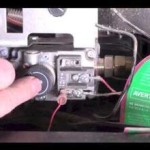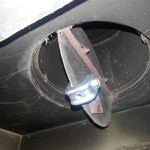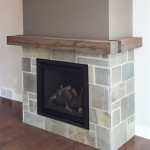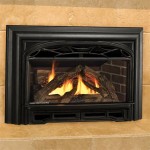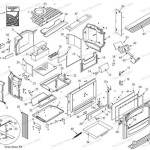DIY Fireplace Starter Logs: A Comprehensive Guide
Fireplace starter logs, also known as fire starters or kindling logs, are designed to quickly and efficiently ignite a fire in a fireplace, wood stove, or outdoor fire pit. Commercial options are readily available, but creating these starters at home offers a cost-effective and environmentally conscious alternative. This article details various methods for crafting DIY fireplace starter logs, considering material options, safety precautions, and optimal usage techniques.
The primary function of a fireplace starter log is to provide a concentrated source of readily combustible material. This allows the fire to establish itself quickly and easily, even when using larger, less easily ignitable pieces of wood. Commercial starters often contain petroleum-based ingredients, which can release undesirable fumes and contribute to environmental pollution. Homemade starters, on the other hand, can utilize recycled and natural materials, reducing environmental impact and promoting sustainability.
Key Point 1: Material Selection and Preparation
The selection of appropriate materials is crucial to the effectiveness of DIY fireplace starter logs. The ideal materials are readily combustible, readily available, and preferably derived from recycled or natural sources. The three primary components of a DIY fire starter are the combustible material, the fuel source, and the binding agent (optional).
Combustible materials serve as the initial tinder, catching the flame quickly and sustaining it long enough to ignite the primary fuel. Common options include:
- Dryer Lint: Dryer lint is a highly effective and readily available combustible material. It is extremely flammable and catches a flame with minimal effort. Before use, ensure that the lint is completely dry and free from any synthetic fibers, as these can produce harmful fumes.
- Cotton Balls: Cotton balls, especially when combined with a flammable substance like petroleum jelly or wax, make excellent fire starters. The cotton fibers readily absorb the fuel and provide a sustained flame.
- Shredded Paper: Newspaper, cardboard, and other paper products can be shredded and used as a combustible material. However, it's important to use uncoated paper to avoid releasing harmful chemicals when burned. Egg cartons are also ideal as they provide both a container and combustible material when filled with other materials like dryer lint or sawdust.
- Pine Needles and Cones: Naturally occurring pine needles and cones are excellent for starting fires, especially when dried thoroughly. Pine needles contain resins that make them highly flammable, and pine cones provide a structured base for the fire.
- Sawdust: Sawdust, generated from woodworking activities, is a readily available and effective combustible material. It burns easily and can be combined with other materials to create a long-lasting fire starter. Prior to use, confirm that the sawdust is untreated and free from any chemical finishes.
The fuel source provides the sustained energy needed to ignite the larger pieces of wood. Common fuel sources include:
- Wax (Paraffin, Beeswax, Soy Wax): Wax is a versatile fuel source that burns slowly and steadily, providing ample time for the fire to establish itself. Paraffin wax, derived from petroleum, is a common and inexpensive option. Beeswax, a natural product, burns cleanly and emits a pleasant aroma. Soy wax, derived from soybeans, is a renewable and environmentally friendly alternative.
- Petroleum Jelly (Vaseline): Petroleum jelly is a highly effective fuel source that burns for an extended period. When combined with cotton balls or other combustible materials, it creates a reliable and long-lasting fire starter.
- Vegetable Oil: Vegetable oil can be used as a fuel source, although it is not as effective as wax or petroleum jelly. It can be used to soak combustible materials like cotton balls or sawdust, providing a sustained flame.
The binding agent helps to hold the starter log together, preventing it from falling apart before it can be ignited. While not always necessary, a binding agent can improve the overall structure and longevity of the fire starter. Common binding agents include:
- Wax (Same as Fuel Source): The same wax used as a fuel source can also serve as a binding agent. Melting the wax and combining it with the combustible material will create a solid, cohesive fire starter when it cools.
- Egg Cartons (Cardboard): As mentioned before, egg cartons can provide structure to the fire starter. Each individual cup can be filled with combustible material and a fuel source, creating individual starter units.
Before starting the process, gather all necessary materials and ensure a well-ventilated workspace. When working with melted wax, exercise caution to prevent burns. It's also prudent to have a fire extinguisher nearby for additional safety.
Key Point 2: Various DIY Fire Starter Log Methods
Numerous methods can be employed to create DIY fire starter logs, each with its own advantages and disadvantages. The optimal method will vary depending on the availability of materials, desired burn time, and level of experience.
Cotton Ball and Petroleum Jelly Fire Starters: This method is one of the simplest and most effective. Coat cotton balls liberally with petroleum jelly. Roll each cotton ball thoroughly to ensure it is completely saturated. These can be stored in a waterproof container for future use. To use, simply pull apart the cotton ball slightly to expose some dry fibers and ignite. This method produces a long-lasting flame, sufficient to ignite kindling or larger pieces of wood.
Dryer Lint and Wax Fire Starters: Melt wax in a double boiler or a heat-safe container placed within a larger pot of boiling water. Use caution when handling hot wax. Stuff egg carton cups with dryer lint. Pour the melted wax over the dryer lint, ensuring that it is completely saturated. Allow the wax to cool and solidify. Once cooled, the individual egg carton cups can be separated and used as fire starters. This method utilizes recycled materials and creates a self-contained fire starter.
Sawdust and Wax Fire Starters: Melt wax as described above. In a mixing container, thoroughly combine sawdust with the melted wax. The ratio of sawdust to wax will depend on the desired consistency. A higher ratio of sawdust will result in a more solid fire starter, while a higher ratio of wax will result in a more flammable fire starter. Pour the mixture into muffin tins or other molds and allow it to cool and solidify. Once cooled, remove the fire starters from the molds. This method is ideal for utilizing sawdust generated from woodworking projects and creates a dense, long-burning fire starter.
Pine Cone and Wax Fire Starters: Gather dry pine cones. Melt wax as described above. Dip the pine cones into the melted wax, ensuring that they are completely coated. Alternatively, pour melted wax over the pine cones. Allow the wax to cool and solidify. These fire starters are visually appealing and naturally contain flammable resins, making them highly effective. They can be used whole or broken into smaller pieces for smaller fires.
Cardboard Roll and Wax Fire Starters: Save cardboard toilet paper or paper towel rolls. Stuff the rolls with dryer lint, shredded paper, or sawdust. Fold or tape the ends of the rolls to contain the filling securely. Melt wax as described above. Dip the stuffed rolls into the melted wax, or pour wax over them until saturation. Allow to cool and solidify. Cut these rolls into smaller segments as needed for individual fire starting. This method efficiently uses recycled materials.
Each of these methods can be adapted and modified to suit individual preferences and available resources. Experimenting with different combinations of materials can lead to the discovery of unique and effective fire starter recipes.
Key Point 3: Safety Precautions and Usage Guidelines
When crafting and using DIY fireplace starter logs, it is imperative to adhere to strict safety precautions to prevent accidents and injuries. Proper usage techniques will ensure optimal performance and safety.
Safety Precautions:
- Ventilation: Always work in a well-ventilated area when melting wax or working with flammable materials. This will prevent the buildup of harmful fumes.
- Heat Source: When melting wax, use a double boiler or a heat-safe container placed within a larger pot of boiling water. This will prevent the wax from overheating and potentially igniting. Never melt wax directly over an open flame.
- Handling Hot Wax: Exercise extreme caution when handling hot wax. Wear heat-resistant gloves and eye protection to prevent burns. If hot wax comes into contact with skin, immediately rinse the affected area with cold water.
- Fire Extinguisher: Keep a fire extinguisher nearby at all times when working with flammable materials. In the event of a fire, use the fire extinguisher to extinguish the flames.
- Storage: Store DIY fire starter logs in a cool, dry place away from direct sunlight and sources of ignition. Store them in a fire-resistant container.
- Supervision: Never leave a fire unattended. Always supervise children and pets when a fire is burning.
Usage Guidelines:
- Preparation: Before starting a fire, ensure that the fireplace, wood stove, or fire pit is clean and free from debris. Stack the firewood in a manner that allows for good airflow.
- Placement: Place the DIY fire starter log beneath or within the kindling and smaller pieces of wood. Ensure that the fire starter is in direct contact with the kindling.
- Ignition: Use a long match or lighter to ignite the fire starter. Allow the fire starter to burn for several minutes until the kindling is ignited.
- Adding Fuel: Once the kindling is burning strongly, gradually add larger pieces of wood to the fire. Avoid overloading the fire with too much wood at once.
- Monitoring: Continuously monitor the fire and add wood as needed to maintain a steady flame. Never leave a fire unattended.
- Extinguishing: When finished, ensure that the fire is completely extinguished before leaving the area. Use water or sand to douse the embers. Stir the ashes to ensure that there are no remaining hot spots.
By adhering to these safety precautions and usage guidelines, individuals can safely and effectively create and utilize DIY fireplace starter logs. These homemade starters provide a cost-effective and environmentally friendly alternative to commercial options, while also promoting self-sufficiency and resourcefulness.

Fire Starter Logs Are Easy To Make With Toilet Paper Rolls

17 Homemade Diy Fire Starters You Can Make That Actually Work

How To Build And Start A Fire In Your Fireplace Full Service Chimney

Fire Starter Logs Are Easy To Make With Toilet Paper Rolls

5 And Easy Diy Fire Starters You Can Make In Minutes Bob Vila

17 Homemade Diy Fire Starters You Can Make That Actually Work

Fire Starter Logs Are Easy To Make With Toilet Paper Rolls

Hearth In The Home Fire Starters And Logs Jaime Costiglio

Homemade Fire Starters 3 Ways To Make Them The Art Of Doing Stuff

Best Firewood To Use And Two Homemade Fire Starters
Related Posts

